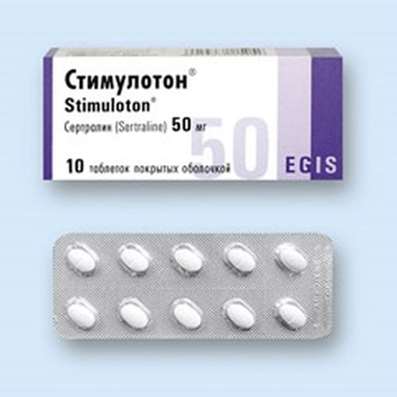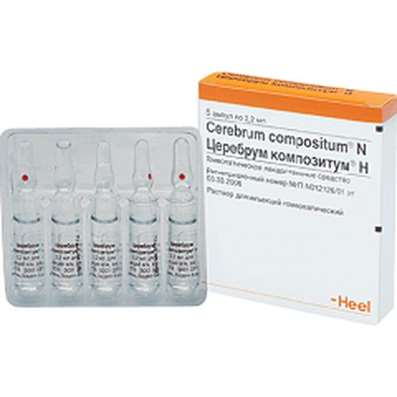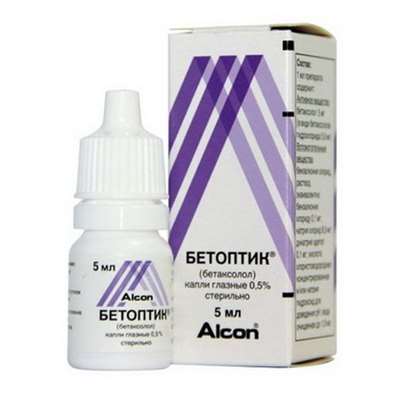Depression
22 Oct 2016
Man refers to the biological species, so it is subject to the same laws as the other members of the animal kingdom. This is true not only of the processes occurring in our cells, tissues and organs, but also our behavior - both individual and social. Dr. Doping examines such issues at the interface of biology, endocrinology, and psychology, and shows examples of confirming their medicine, history, literature and painting.
"Everything that does not kill me makes me stronger" - F. Nietzsche said. He was wrong: such an impact, as uncontrolled stress situation does not kill immediately, but makes a person weak and sick, in other words, depressed.
Depression is the most common of the so-called big psychosis (the other two - schizophrenia and epilepsy). Accordingly, the most common psychiatric condition worsening human adaptation, reducing its efficiency and subjectively experiencing the most difficult, it is a depression.
The idea of depression as a separate illness brought great German psychiatrist Emil Kraepelin. Kraepelin described the triad of symptoms of a depressive state, which maintains a diagnostic value to our time:
- dreary, depressed mood;
- mentally-verbal inhibition;
- motor retardation.
In other words, depression is characterized by inhibition of affective, cognitive and motor functions of the individual. For mania for the state, the opposite of depression, said triad is inverted. Mania is characterized by a cheerful mood, and mental-verbal and motor excitation. Note that activation of the cognitive functions in manic state is not fruitful. At the same time one thought "in a hurry to change the other," leaving speech half an hour and a half second. Moreover, the idea is not only not follow the reasoning, but appear and disappear rapidly, without logical connection.
In contrast to the mania, euphoria characterized by elevated affect, so without cause good mood, as well as a decrease in motor and cognitive functions.
Here we note that the term "mania" is often used to refer to unprofessional nonsense such as "megalomania", "persecution mania". The use of this term in this case is inappropriate, such as the use of, for example, a term such as "sex maniac". The patients in the manic phase of hypersexuality, but not because of painfully high sexual motivation, and the second - because of the increased self-esteem. A depressive episode during human self correspondingly reduced.
Phenibut is one of lots of medicines, that helps to struggle against depression.
Kraepelin emphasized the major role of hereditary factors in the development of depressive psychosis. Have the sick person among relatives increases the risk that the conditions are frequent subdepressive summer lightning psychosis, t. E. Eventually go into a severe illness. Meanwhile, as well as any sign of depression arises under the influence of a combination of genetic and environmental factors. The main environmental factor that affects the formation of depressions, - uncontrolled stress.
The depression, the symptoms of which were first described in the "Code of Hippocrates", and still is a major psychiatric problem. Depression affects 10 to 20% of all countries and cultures, and in severe requiring hospitalization, - 3 to 9%. Moreover, about a third of patients are not sensitive to any form of treatment, including psychotherapy, drug and electro-convulsive therapy, sleep deprivation, light therapy and no longer apply lobotomy (a surgical operation on the brain).
Depressions are a heterogeneous group of disorders. But for all of them characterized by three symptoms: depressed mood, cognitive and motor retardation. In addition, usually there are additional symptoms: agedoniya (loss of interest in all or almost all usual activities or lack of pleasure from them); decreased libido; eating disorders (increased or decreased); psychomotor agitation or inhibition; sleep disorders; asthenia; ideas of self with feelings of worthlessness of existence; suicidal thoughts.
The relevance of the problem of anxiety is the fact that world consumption of anti-anxiety drugs (Valium, seduksen, tazepam, Phenazepamum and so on. P.) In 1980-2000. Twentieth century. second only to aspirin. It should be emphasized that both depressive and anxious syndromes often occur in the structure of various mental disorders. For example, anxious depression exists as an independent disease, but depression and anxiety often accompany physical illnesses. Moreover, affective disorders, the degree of which does not reach the level of psychosis, occasionally develop in the majority of the population due to the "stress of life."
Phenotropil also can help to avoid such feelings.
Classification of depression
The terms "depression" and "anxiety" is often used as synonyms for stress. It is not right. There are significant differences between these concepts.
Anxiety - an affect that occurs in anticipation of uncertain danger or adverse events.
Depression - a syndrome, which is characterized by a combination of three symptoms: depressed mood, lethargy intellectual and motor activity, ie, a reduced level of affective, cognitive and motor functions of the individual...
When depression resulting from past events, people immersed in the bleak present, whereas with high anxiety his attention absorbed unpleasant or hazardous events that may occur in the future. Anxiety arises with stress and accompanies him, and depression - is a consequence of chronic stress. Thus, at certain stages of disease increased anxiety is often combined with a depressive syndrome.
Depression is a very common mental disorder that can take many forms. In the structure of this disease may be present, and anxiety, and other passions. There is, for instance, "anger depression." There is even an agitated depression, in which the patient, despite the depressed mood is in the motor and mental excitement. So the leading symptom of depression is a disorder of affect - depressed mood. Attention is drawn to the abundance of synonyms doldrums: depression, sadness, melancholy, sadness, grief, Sukhothai, sorrow, Tuga, hypochondria, melancholy and spleen. Such lexical richness indicates the prevalence of this condition and its importance in the life of Russian people. It is noteworthy that the most common word - discouraged - has Indo-European root nau, which is found in the Old Russian word Nav - "dead man." Thus, it is clear that in the minds of the ancient depression are closely related to the death. This is confirmed by modern statistics of suicide. The vast number of successful suicide attempts are committed by people who are in the doldrums.
For a better understanding of the nature of depression consider the classification of depressive states.
Depression is shared by different criteria. Thus, the isolated reactive depression if obvious reason for its occurrence. If the mental disorder preceded the turmoil in his personal life, natural disasters, serious accidents, etc. -.... Most likely cause of the disease in this event, ie, the disease is a reaction (sometimes delayed) on strong sudden impact. Much more often depressive episode develops without apparent cause or reason to it, which indicate the patients themselves, is quite insignificant event. Since the external cause of the disease can not be established, then this is called endogenous depression, t. E. Having some internal cause.
In fact, endogenous depression also have external causes. Their development is connected with the constant current human chronic stressors.
He may not be aware of what is in a state of uncontrolled stress. Many domestic drama that sometimes end with murder "on the basis of personal hostile relations", represent the situation uncontrollable one or all parties. In addition, numerous small stressful events do not pass without a trace. Their effect accumulates and results in clinically apparent picture. This "stressoplankton1 - ... a microcosm of tiny, but numerous monsters, where the weak, but the poisonous bites quietly eroding the tree of life"
One of the arguments against what is learned helplessness caused by uncontrolled stress is an adequate model of endogenous depression, is used by the short duration of stress exposure. If the stressor is applied painful stimulus electrocution - the simplest and most common because stimulation, while the impact is less than one hour. It is possible that in this case is really more appropriate to treat the resulting changes in the behavior and physiology of animals as a model of reactive depression, t. E. This form of the disorder, which develops as a result of short-term, but strong impact. To avoid this a fair objection, experts in modeling of mental disorders in animals have developed a model of depression as a result of chronic mild stress (chronic mild stress).
Under such stress, the rat or mouse daily for four weeks undergo one of the following actions:
- lack of food;
- lack of water;
- the slope of the cells;
- wet litter;
- clustering (number of animals per cage twice
- normal);
- social isolation (one animal in a cage);
- Inversion of the light cycle (lights on at night and off in the morning).
If each of these stressors applied in isolation, t. E. To work on only a single animal deprivation of water for a day or a cell slope, it is, of course, will cause stress reactions. But the behavioral and physiological characteristics of the animals will return to normal after two or three days. However, chronic use of effects, and in an unpredictable manner, the animals develop a condition of learned helplessness, which can last several months.
Endogenous depression is called primary because there is no obvious cause of the disease, rather, it can not detect. Secondary depression is called having an obvious cause. It can be a traumatic event or disease. Whenever you feel unwell, mood falls; if it is reduced very much, we speak of depression secondary to physical illness.
Do not fall into depression – buy Afobazol.
Distinguish primary and secondary depression can be difficult, especially if you can not find some strong shocks preceding the disease as primary depression is often accompanied by pain in different parts of the body. Consequently, talking about different somatic masked depression - cardiovascular dermatological up. It may be complaints of pain and discomfort in the absence of organic changes: psychogenic dyspnea; psychogenic headache; psychogenic dizziness, movement disorders, have a psychogenic origin; psychogenic pseudo-rheumatism (complaints of musculoskeletal pain); a variety of complaints about the unpleasant and painful sensations in different parts of the areas
belly; psychogenic disorders in the kidneys, as well as a variety of sexual disorders.
The term "hypochondria", which now means a focus on issues of health, comes from the Greek hypochondrion - hypochondria. Chondrite old anatomists called thoraco-abdominal partition, setting it consists of cartilage. We conclude that the ancient hypochondriacs complained mostly on vague pain in the upper abdomen. Note that the Russian "blues" - derived from "hypochondria".
The high frequency of such localization of the pain associated with depression is reflected in the emergence of such a synonym for it, as "spleen". This is the English name of the spleen, which is located in the left upper quadrant. In 1606, an Englishman, published a book describing his depression, which used the verb to spleen.
Since the spleen is connected and a common term, as melancholia, which means "black bile spill." Opposite the spleen, in the right upper quadrant, is the liver, the body brown, secretes bile, feces imparting a characteristic color. The spleen has a dark brown color, and by analogy with the liver called its secret "black bile". Bouts of depression associated with the spreading of black bile. Note that this mythical liquid: the spleen does not release any liquids in the body form blood cells.
It is interesting that such a scourge travelers era of great geographical discoveries, as scurvy, too, is one of the somatic (bodily) manifestations of depression. In school we are taught that a lack of vitamin C in the diet leads to scurvy - a severe illness in which the teeth fall out. In particular, scurvy is very common among the members of the expedition. it became apparent, especially when in the XV century. began long voyages Europeans to other continents. Fresh fruits and vegetables - rich in vitamin C products - quickly ended, and scurvy played out among the crews during the many months of staying in the open ocean without fresh supplies. One of the forerunners of preventive fortification is considered to Captain James Cook, who in 1768 took the circumnavigation sauerkraut, which is believed to prevent the emergence of scurvy among the crew members.
In this story, almost everything right. Indeed, Vitamin C is needed, since it is not synthesized in the human body and must be supplied with food, ie. E. Dietiecheskim is a vital factor. And we even without reminders of doctors willing to eat sauerkraut, lemons and oranges, green onions and black currants. However, scurvy is not the mere absence of vitamin C, and a violation of its metabolism in the body, which reduces the synthesis of collagen - a protein of connective tissue and leads to tooth loss. If the exchange processes are violated, even if the abundance of vitamin C in the diet, scurvy still develop. And this metabolic disturbance often occurs with depression.
As for Captain Cook, then of course we will not deny his contributions to geographical science, sailing, navigation and the British crown. But let us note that in the XVIII century. world travels were no longer expeditions into the unknown. Everyone already knew how to sail from Europe to America, from Europe to the Cape of Good Hope, the Cape of Good Hope to the Malabar, etc. Boat trips are no longer uncontrollable situation, as they were for the first travelers -.. Vasco da Gama, Columbus , Magellan. Since uncontrolled situation has considerably decreased, it has dropped substantially and the likelihood of developing depression. In favor of the treatment of scurvy as the first biological marker of depression, not a lack of vitamin C indicates, in particular, the high frequency of the disease (in spite of a sufficient amount of vitamin C in the diet) among people experiencing prolonged uncontrolled stress, for example, among the prisoners, or the participants polar expeditions.
Note that in the experiments collagen synthesis violation used as a biological marker of depression, are much more reliable than the results of psychological tests.
The frequency of specific somatic manifestations of depression varies in different social groups and changes over time. This is due to the fact that psychosomatic symptoms, as well as many mental disorders are epidemic spread, caused by unconscious imitation.
Somatic disorders in depression are so varied that there was a aphorism: "Who knows the clinic of depression, he knows medicine," like the doctor's aphorism XIX century .: "Who knows clinic syphilis, he knows medicine." Somatic mask depression not only diverse but also very widespread. According to various researchers, a third to a half of patients, the first time to see a doctor in need of correction of emotional state, not in the treatment of heart, liver, kidneys and so on. Etc. .. In other words, pain in different parts of the body to which they complain are not the result of disease bodies located there, and the reflection of the primary depressive state.
As in old times there were not lots of drugs, such as Phenotropil, Afobazol and Phenibut.
Meanwhile, from the practical side it is essential to determine what caused the depression of the patient - a consequence of the disease or manifestation of the primary symptoms of endogenous depression. In the first case is assigned to a specific treatment of somatic disorders, and in the second - antidepressant therapy. various hormonal tests is effectively used for the differential diagnosis of primary depression.
According severity of the disorder, ie. E. In the severity of clinical symptoms, depression can be both psychotic and remain at a neurotic disorder. Without going into the intricacies of the various definitions of neurosis and psychosis, say only that the border between the two forms of the disease passes through the patient's level of socialization. In neurosis, it can perform many functions of a member of society, to communicate with others and work even though it is given to him with difficulty and complexity of delivering others. In psychosis, the patient is excluded from the social life and the need for hospitalization. When a psychotic depression patient lies in bed and almost does not respond to external stimuli and internal needs.
Accordingly, the severity of the disorder talk about mood disorders if they are expressed, and dysthymic if unobtrusive mood disorder or transient. For example, in the premenstrual syndrome most often occur dysthymic disorders.
The severity of the disease, as a rule, corresponds to the type of flow. In the most severe form of depression during downturns in the affective, cognitive and motor areas (depressive episodes) are replaced by manic phases. At this time in patients with a shift in the opposite direction: marked rise unmotivated mood, mental and motor agitation. This does not mean that this period is favorable for mental activity. For manic patients is characterized by verbal stimulation, in other words, talkativeness. Mental arousal means that patients can not concentrate on one subject or lesson. Their thoughts are jumping; having arisen, he did not have time to take shape, and the logical end as they were replaced by new ones. Maniacal excitement of the patient is very painful for others.
Unipolar depression, in which only light intervals depressive episodes alternate, generally milder bipolar, in which alternate light intervals and depressive and manic phases.
Depressive episodes are repeated at varying intervals. If they occur exclusively during the autumn-winter period, the prognosis is favorable. Autumn depression quite easily adjusted and, as a rule, does not go beyond lung neurosis. If depressive episodes occur is due to change in natural light, the prognosis is less favorable.
As for anxiety, then it is easier classification. There are a primary concern, the so-called post-traumatic syndrome, in which the leading symptom is a feeling of anxiety. The secondary alarm is accompanied by many situational disorders, which is natural, since a healthy person and a certain anxiety is necessary for formation of motivation. Recall that under stress anxiety causes the person or animal to adapt its behavior to changing conditions.
Because depression is often accompanied by increased anxiety, it is essential to correctly diagnose anxiety as a primary or as a secondary, t. E. Which is composed of a depressive syndrome. To do this, apply the so-called Diazepam test. Diazepam is an antianxiety drug which has anti-depressant activity. If after receiving the patient decrease any symptoms or complaints, so they were due to anxiety.

 Cart
Cart





